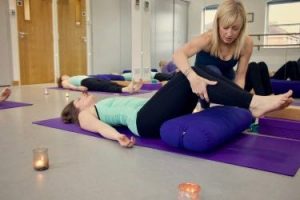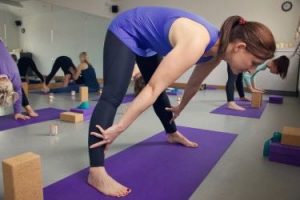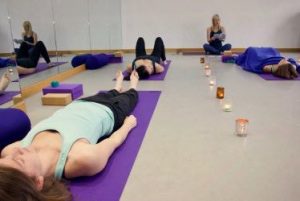 With the constant demands of our hectic schedules and never ending to-do list, stress and anxiety can become a frequent and unwelcome guest in our lives.
With the constant demands of our hectic schedules and never ending to-do list, stress and anxiety can become a frequent and unwelcome guest in our lives.
To find out why we need to return to prehistoric times. We have an in-built survival mechanism called the fight-flight-freeze response, which evolved to help us stay alive. If a sabre toothed tiger or woolly mammoth came in our ancestors path the only option was to fight like mad, run like hell or freeze. When this mechanism is activated hormones including adrenaline and cortisol are released by the brain. The physical effects of this are that the breath quickens, the heart beats faster, blood is directed away from other parts of our body towards our limbs so we are ready to move.
What has this response, which was designed to help us survive extreme emergencies got to do with do many of us experiencing stress so often? And can this help us learn how to combat stress and anxiety?
 The problem is that our brains and nervous systems have not evolved with our lifestyle, so that this response is being activated by many harmless aspects of our modern day life. This is happening not just on an occasional basis but all the time.
The problem is that our brains and nervous systems have not evolved with our lifestyle, so that this response is being activated by many harmless aspects of our modern day life. This is happening not just on an occasional basis but all the time.
Our world has sped up into something we are not built for and ours brain are now responding to all sorts of everyday stimuli as if they are life threatening scenarios. It might be things such waking up to an alarm, rushing to the office, missing a train or getting stuck in traffic, staying at your computer all day or having a deadline. This means that our nervous systems are permanently on red alert and as such our mind and body are rarely, if ever afforded the luxury of true rest, relaxation and rejuvenation. This could potentially impact our health and well-being long term.
Yoga and meditation can really help to unwind this response by allowing the practitioner to be more in the moment, to take time out to slow down the pace of their lives. During our yoga practice we can step off the treadmill of life, let go of the to-do list and start to create more space and stillness both physically and mentally.
Here are Valerie May Yoga’s top five yoga tips for helping to de-stress:
1. The Breath
Taking a few minutes to focus on the breath can have profound impacts on the system, restoring a sense of calm.
It only takes about 90 seconds of focussed breathing to make positive shifts in the nervous system.
Breath focus is a key part at the start and throughout the yoga classes, with many techniques to suit each individual being introduced
2. Concentration of awareness
Simply focussing on one thing. This is the very definition of meditation and is specifically mentioned in yoga philosophy as a tool for calming the waves of the mind.
Allowing the focus to be on one thing rather than darting around between many things can help to calm the mind and slow down the nervous system.
The focus should be something that the individual finds comfortable and easeful to concentrate on. In class this is often the breath, sounds or the sensations of the body.
3. Inversions
“An inversion a day keeps the stress at bay,” quips best-selling author Gabrielle Bernstein in her spiritual self-help guide Miracles Now. Guru Bernstein explains that simple yoga inversions can help turn your mood around. Whether you’re suffering from anxiety, stress, or plain old mental fog, spending a few minutes upside down can recharge your soul’s battery, provide instant stress relief, and help you conquer the rest of the day with fortitude and grace.
Inversions also improve circulation, thereby sending oxygen to the brain (bye-bye, mental fog!). Enhanced circulation has its own benefits, of course, including: improved digestion and elimination, lymphatic drainage, and blood purification (i.e., full-body detox!).
Examples of inversions are forward bends, shoulder stand, legs up the wall and headstand.
4. Moving meditation
In our busy lives it is possible to connect to stillness whilst in the flow. Many people require physical movement in order to unwind. Moderately paced continuous movement can release physical tension and settle the mind.
It is possible to manage both physical and mental discomfort by bringing your focus to your body during the yoga practice. Moving through the yoga flow anchors your attention to the present moment and mitigate your mind’s tendency to spin out of control. Also maintaining a steady breath throughout and allow your mind to reframe back to a balanced state
Valerie’s classes use poetry, music, contemplation through meaningful intentions and flowing movements to get you out of your busy head and deep into your body. This can really help to feel more refreshed and deeply peaceful.
5. Savasana Relaxation
The most important part of the class! There is nothing like lying down on your mat after practice and sinking into a blissful ‘savasana’ relaxation to sooth away stress and simply be.

Savasana relaxation is a few minutes of meditative quiet, when your body stops moving and your mind rests. It is time to close your eyes and completely surrender into stillness.
The word savasana originates from the ancient Sanskrit words, ‘sava’ -‘corpse’ and ‘asana’ – ‘pose’. Savasana relaxation during yoga is a perfect antidode to today’s hectic lifestyle. It is hugely beneficial for helping the body and mind to recover from stress and fatigue.
Yet this simple-sounding pose is more difficult than you might realise. It is very rare that we just lie down and stop. But even a few minutes of savasana relaxation can have powerful benefits. Here are some ways that savasana relaxation reduces stress:
Savasana gives you space to check in with yourself, to give gratitude or to set an intention for something you wish to change or do. It’s a time when you can experience inner peace and self-acceptance.
It calms the body and the nervous system by promoting rest in the body. Fatigued muscles get to relax, tense shoulders and jaws soften and the eyes quieten down to reflect a quieter state of mind.
It quietens and resets the mind by allowing allows you to completely surrender, stop fighting the clock and make space for peace and harmony to fill the soul. It’s been compared to turning off your computer when it’s acting up. Once you reboot it, the computer often has greater functionality.
Before starting any yoga practice please it is advisable to seek out a qualified yoga teacher. Should you wish to find out more about how yoga can combat stress and anxiety please feel free to contact me at Valeriemayyoga@gmail.com or check my website at valeriemayyoga.com.

